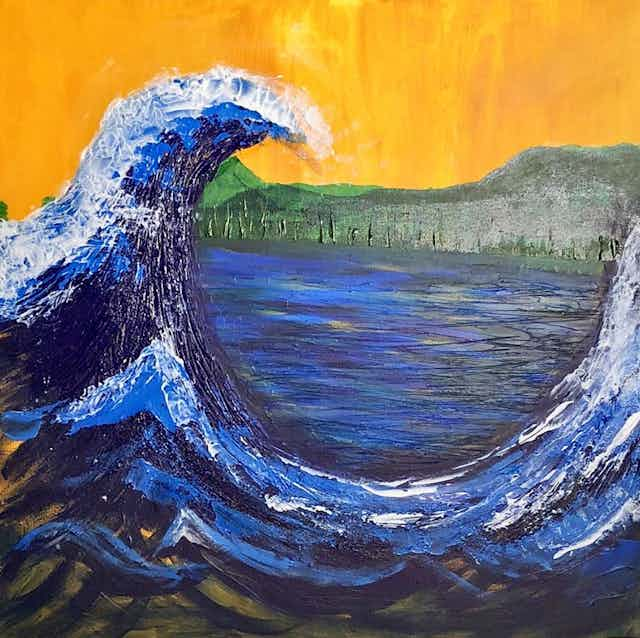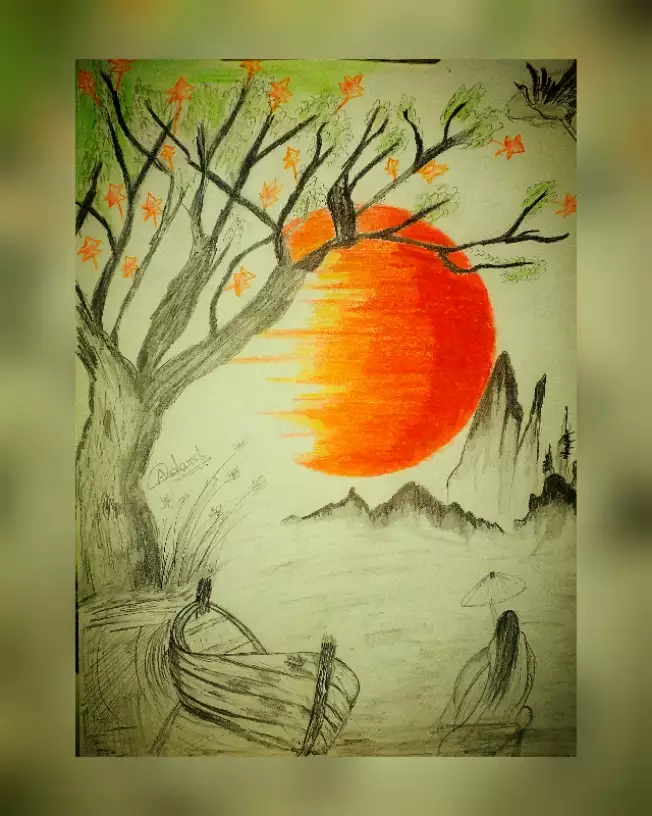Beginning on a Visual Trip Through the Lyrical Analyses of Nature in Impressionist Landscapes
In the world of art history, the Stylist activity sticks out as a pivotal duration that transformed the method nature was depicted on canvas. Artists such as Claude Monet, Camille Pissarro, Edgar Degas, Berthe Morisot, and Vincent Van Gogh caught the essence of the environment through their distinct interpretations, creating landscapes that go beyond simple graph. Each brushstroke, each play of light and darkness, and each color selection in their works speaks volumes about the musicians' deep connection to nature and their capacity to equate its elegance onto the canvas. As we discover the lyrical interpretations of nature in Impressionist landscapes, we are invited to submerse ourselves in a globe where fact and feeling intertwine, offering a look right into the artists' profound admiration for the environment.
The Fascinating Brushstrokes of Claude Monet
Claude Monet's mastery of brushstrokes goes beyond simple technique, imbuing his landscapes with a heavenly top quality that enthralls and astounds audiences - trump art. His cutting-edge use of shade and light, integrated with his distinct brushwork, creates a feeling of movement and life within his paintings. Monet's renowned series of jobs depicting water lilies and his famous haystacks showcase his capability to record the fleeting impacts of light and ambience

Embracing Light and Shadow With Camille Pissarro
Personifying a comparable reverence for the interaction of light and shadow, Camille Pissarro's creative vision unfolds as an unified exploration of the all-natural globe's luminous subtleties. Pissarro, a vital figure in the Impressionist motion, masterfully recorded the dynamic connection in between light and darkness in his landscapes. His adept use of shade and brushwork permitted him to convey the subtle changes in light that specify various times of day and seasons.
Pissarro's paintings usually feature dappled sunshine filtering system via leaves, casting elaborate patterns of light and darkness on the planet listed below. In jobs such as "Hoar Frost, the Effect of Snow, Pontoise," Pissarro skillfully portrays the crisp illumination of winter months sunshine juxtaposed with the amazing darkness that specify the snowy landscape. By welcoming both light and darkness in his make-ups, Pissarro welcomes viewers to immerse themselves in the natural charm and transient impacts of light in the globe around them.

Through Pissarro's works, we are reminded of the transformative power of light and shadow, inviting us to stop briefly and appreciate the short lived minutes of elegance existing in the day-to-day landscapes that surround us.
A Symphony of Colors by Edgar Degas
Edgar Degas manages a lively harmony of shades in his masterful art work, instilling his structures with a dynamic interplay of shades that mesmerize the audience's gaze. Known primarily for his ballet dancers and intimate scenes of Parisian life, Degas adeptly adjusted shades to communicate mood and movement in his paints. trump art. His usage of strong, contrasting shades and subtle tonal variants produced a feeling of depth and vibrancy within his works
Degas' shade scheme typically contained abundant blues, deep greens, and cozy oranges, which he applied with certain brushstrokes to record the essence of his subjects. Whether portraying a ballerina mid-performance or a team of pals chatting at a cafe, Degas' shades not only depicted the scene but also stimulated a feeling of feeling and power.
Additionally, Degas' experimentation with light and darkness added an extra layer of intricacy to his color make-ups, enhancing the total environment of his paints (trump art). Through his skillful control of shade, Degas produced an aesthetic symphony that remains to resonate with visitors today
Exploring Nature's Peacefulness With Berthe Morisot
Berthe Morisot's creative vision supplies a tranquil departure from the vivid color harmonies of Edgar Degas, as she captures the harmony of nature in her expressive landscapes. Known for her fragile brushwork and intimate portrayals of daily life, Morisot's landscapes try this out exhibit a feeling of peace and harmony.
Morisot's paints frequently include soft, soft tones that convey a sense of calmness and peacefulness. Her jobs, such as "The Cradle" and "Summer season's Day," display her capability to record the subtle appeal of nature in a manner that is both comforting and contemplative to the customer.
Unlike several of her Stylist equivalents who focused on vibrant colors and dynamic make-ups, Morisot preferred to produce mild, reflective scenes that invite the viewer to pause and reflect. Through her skillful use light and darkness, Morisot creates a feeling of peace that reverberates with the viewer on a deep emotional level.
The Emotional Landscapes of Vincent Van Gogh
Vincent Van Gogh's landscapes clearly share a deepness of emotion via their vibrant brushwork and expressive usage of shade. The Dutch post-impressionist musician is renowned for his capability to capture raw and extreme emotions in his paints, going beyond conventional depictions of nature. Van Gogh's tumultuous individual life, marked by psychological wellness battles, considerably influenced his art, instilling his landscapes with a sense of anxiousness, melancholy, or vitality.
In works such as "Starry Evening" and "Wheatfield with Crows," Van Gogh's swirling brushstrokes and vibrant shade selections evoke a profound emotional action from viewers. The rough skies and perturbed landscapes in his paints show his inner chaos and emotional disturbance, welcoming customers to look into the complexities of his subconscious.
Van Gogh's special visual language, defined by exaggerated perspectives and vibrant use color, develops landscapes that resonate with visitors on a deeply psychological degree. With his art, Van Gogh invites us to see nature not equally as an outside reality yet as a mirror of our innermost sensations and feelings.
Final Thought
In conclusion, the impressionist landscapes of artists such as Claude Monet, Camille Pissarro, Edgar Degas, Berthe Morisot, and Vincent Van Gogh use a fascinating and one-of-a-kind aesthetic analysis of nature. Through their usage of brushstrokes, shade, feeling, and light, these artists have actually developed a harmony of images that stimulate a sense of tranquility and appeal in the environment. Their works proceed to inspire and bewitch viewers with their lyrical analyses of the landscapes around us.
Each brushstroke, each play of light and darkness, and each shade choice in their works talks quantities about the musicians' deep connection to nature and their capability to convert its charm onto the canvas. His ingenious use of color and light, incorporated with his distinctive brushwork, develops a sense of movement and life within his paintings. His skilled use of shade discover this info here and brushwork enabled him to communicate the refined changes in light that define different times of navigate to these guys day and seasons.
